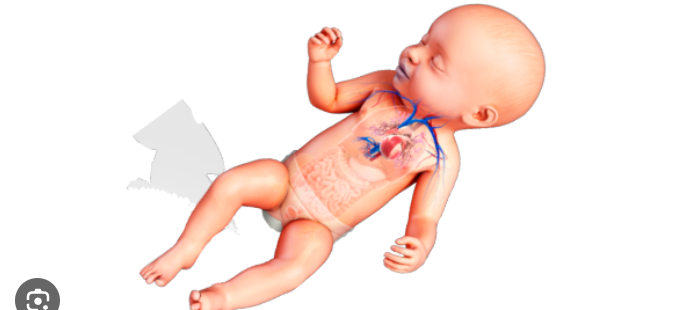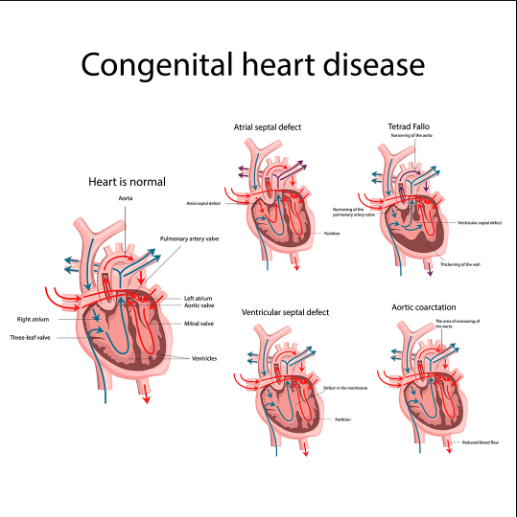Structural defects of the heart can have lasting health repercussions and should be monitored by a specialist of congenital heart disease
When he was born 39 years ago, Nate Marino, senior executive producer for Elvis Duran and the Morning Show on Z100 in New York City, was one of the nearly 1% of all newborns born in the United States with congenital heart disease.
Also read-Cardiomyopathy : A Patient’s Guide To Cardiomyopathy And Its Symptoms

Initially, the problem with Marino’s heart—a too-narrow pulmonary valve and a hole between two chambers of the heart—escaped detection. He was five months old before the problem became as clear as day. Rather than the pink bundle of joy his parents expected, “I was a blue baby,” he says. “My parents say they would look at me, and I’d be as blue as the part of the American flag with the stars.”
Blue-tinged skin—a condition called cyanosis—is a sure sign of an oxygen deficit. The darker the shade of blue, the more severe the deficiency. An oxygen deficiency typically means the heart isn’t pumping enough oxygen-rich blood around the body. Alarmed, his parents took Marino to the hospital, where a cardiologist diagnosed the problem and prescribed emergency surgery.
“They fixed it (the valve), and I lived for 39 years, seeing doctors off and on and having echocardiograms and EKGs” and thinking everything was fine. But it wasn’t. A small hole remained. As he grew and aged, his heart changed, placing other stressors on the defect. Eventually, that had major health consequences for the charismatic radio personality, whose health concerns became a storyline on the syndicated radio program.
“Last October, I was sitting in a restaurant in Pennsylvania with my girlfriend when my hands started to go numb. The whole right side of my body went numb.” He realized he was having a stroke but couldn’t speak to let his alarmed companion know what was happening. “The best way I can describe it is as a lightbulb in your brain popping. There’s that noise before it pops,” he says, and the 15 seconds or so of numbness and being unable to communicate were terrifying.
A common problem is congenital heart disease
Unfortunately, Marino’s story is not unique. Congenital heart defects affect about 1% of newborns in the United States, according to Dr. Emile A. Bacha, director of congenital and pediatric cardiac surgery at the New York-Presbyterian Congenital Heart Center and a specialist in congenital heart disease in adults and children. The March of Dimes estimates that this number corresponds to roughly 40,000 births annually, or roughly one in every 100 babies. According to the Centers for Disease Control and Prevention, the most prevalent birth abnormality in the United States is congenital cardiac defects.

Types of congenital heart disease
The Ohio State University Wexner Medical Center cardiologist, Dr. Elisa Bradley, says, “CHD is often the result of different genetic and environmental interactions.” “There isn’t just one mechanism; there are numerous factors that could potentially contribute to the development of CHD.” This indicates that there are various forms, which contributes to its widespread occurrence.

All told, “there’s a wide range of about 100-plus different malformations” of the heart and coronary arteries that can occur in babies, Bacha says. “It’s one of the biggest varieties of disease in a single organ, and each one has its own anatomy.”
Dr. Curt Daniels, director of the Adult Congenital Heart Disease Program at the Ohio State University Wexner Medical Center and Nationwide Children’s Hospital, says this variety of abnormalities can pose challenges to effective diagnosis and treatment. “It’s not like cystic fibrosis, which is a defined disease. CHD comprises about 100 different things patients can have, and it’s very unique and complex anatomy.”
These abnormalities can include leaky valves, underdevelopment of certain components of the heart, electrical problems that affect how the heart beats, incorrect positioning of major blood vessels or other elements or a combination of several defects.
Symptoms and diagnosis of congenital heart disease
While some CHD cases might go unnoticed, others are discovered well in advance of the baby’s arrival. “Nowadays in the U.S., most pregnant women receiving good prenatal care get a screening ultrasound that often picks up at least a hint of heart problems if there are any,” Bacha explains. “A more sophisticated, in-depth ultrasound or echocardiogram that will usually show you whether there is a significant congenital heart defect” is usually ordered if a problem is identified for the woman.

Daniels says that if the mother has certain conditions, such as diabetes or congenital heart disease, that may lead to a closer inspection of the fetal heart while still in utero. “Those can lead to a fetal echocardiogram done at 20 to 24 weeks,” and depending on what turns up, that may help clinicians “better treat the baby after birth.”
Still, these detection procedures don’t catch everything. “The majority of cases are found at the time of delivery,” Daniels says. And even if evidence of CHD is pinpointed prior to birth, there’s not usually a whole lot that can be done about a defect prior to birth.
Treatments of congenital heart disease
A congenital heart defect should always be examined by a cardiologist as soon as it is discovered. A pediatric cardiologist should be well-positioned to assist if it is discovered in infancy. If it manifests later in life, your best bet for assistance with these kinds of structural heart issues may be to see a cardiologist who specializes in adult CHD.

The exact deformity and the issues it’s causing will determine how CHD is treated. Typical actions consist of:
- Surgical repair of the defect.
- Medications.
- Observation.
Also read-Glaucoma : A Patient’s Guide To Glaucoma And Its Symptoms
images source: Google
Disclaimer: The opinions and suggestions expressed in this article are solely those of the individual analysts. These are not the opinions of HNN. For more, please consult with your doctor.




































